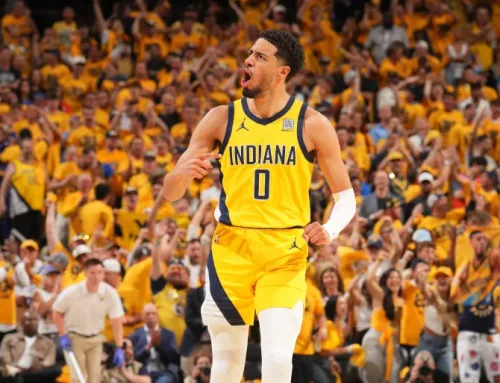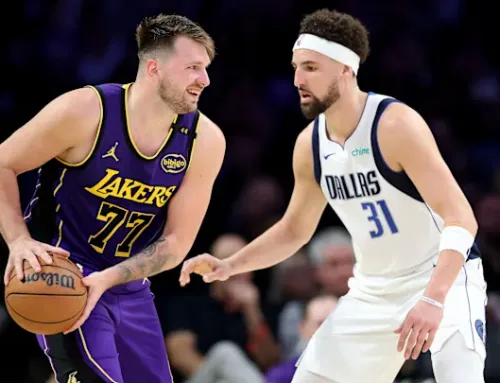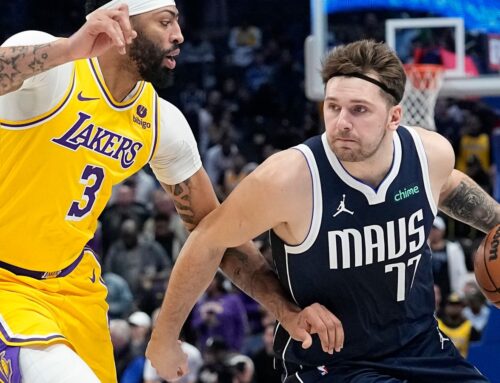By Avi Tyagi
I can’t believe how capable the OKC Thunder already are. It feels like an impossible task. In the summer of 2016, their best player walked for nothing. And now, the second youngest team by weighted age is in the thick of the playoff hunt, with a point differential that would rank within the top 10 league-wide, all despite season-ending injuries to their top 2 center options. How is this possible? Oklahoma City has been on a long journey to reach this point, and while the trek is not anywhere near complete, their destination is well within view now.
In 2016, Kevin Durant walked away for nothing. In today’s era of star moves, it is quite unusual. In our era, almost every team is able to recoup some value for a star searching for newer pastures. Star players get to move to their next stop earlier while enjoying the security of long contracts and teams get to kickstart a rebuild. Yet arguably the most successful rebuild of them all started with no yields from an MVP-candidate in his prime. How? The summer of 2016 taketh, but the summer of 2016 also giveth. In the historic free agency frenzy of 2016, the Thunder adapted to their new situation by displaying remarkable discipline. The first step, trading Serge Ibaka. At that point in time, Serge Ibaka appeared keen for a change of scenery and the Thunder gladly obliged in a draft-day deal. The return: Victor Oladipo, Ersan Ilyasova, and the draft rights to first rounder Domantas Sabonis. With this coup, Oklahoma City set up the foundations for a new era of the franchise. During the hubbub and excitement around the July free agency period, OKC acted with discipline and avoided filling their cap sheet with salaries that would restrict future moves. One week into the season, Ilyasova and a 2020 first rounder were flipped for Jerami Grant, a promising prospect on the tank-tastic 6ers that Presti and Co. had identified as a promising foundational piece. A string of bench pieces, notably including Cameron Payne, were dealt at the deadline to Chicago for Taj Gibson, Doug McDermott, and a 2nd rounder. In totality, OKC’s payroll in 2015-16 was in 2015-16 and 91.78 million in 2016-17, even as the luxury tax threshold jumped up a whopping 28.7 million dollars. They maintained open space and flexibility while most teams around them spent immoderately. As they financially reset the roster and prepared to rebuild their asset base, they also structured an offense and defense around their one remnant from the halcyon days and eventual MVP, Russell Westbrook.
The next step in the rebuild actually came from rebuilding a playoff contender around Westbrook. The super-team rebuild Russell Westbrook required additional complementary stars who were not primarily ballhandlers. Enter Carmelo Anthony and, of course, Paul George for relatively meager prices. Kanter, McDermott and a 2nd went out for Melo and PG was moved for Oladipo and Sabonis. Even after a quick first round exit, the Thunder had still made major accomplishments. With PG and Westbrook, they had reestablished a two-star structure. After putting on a full court press to help assure PG to re-sign in the offseason, OKC still had to make a few more clinical decisions to push into full gear. While the opportunity cost to acquire Carmelo was relatively low (with Kanter already being phased out and McDermott on the last year of his rookie deal), Melo did not mesh with the Thunder’s vision for success. After a down season, it was well established that Carmelo would likely be traded, but OKC avoided a pure salary dump. They used the opportunity to attach a 2022 lottery protected pick to Melo’s contract for overtaxed Hawks starting guard, Dennis Schroder. Dennis was a key 6th man for Mike Budenholzer’s 50+ win Hawks teams and quickly slotted in behind Westbrook. With a similar playing style, the Thunder were able to replicate their offensive structure for almost 48 minutes of the game without taking much off the table for either of their two stars. In the end, OKC saved 73 million dollars in luxury tax payments due to the trade and the included pick protections within the deal saved their 2022 first round pick and instead converted into a cost of 2024 and 2025 2nd rounders. From this point forwards, the macro-level story is well known, but the intricate details are not as evident. What makes this rebuild special is the attention to detail when thoughtfully trading every established veteran for someone of interest or for real potential asset to the franchise. Along the way, they always kept enough veterans in the room to maintain a strong culture and establish winning patterns. Within this nurturing environment, players such as Chris Paul, Danilo Gallinari, Al Horford, and Mike Muscala became key mentors and aspirational figures for their youthful teammates. Sam Presti negotiated the best returns he possibly could for every player, but always maintained an open and honest dialogue with them throughout the process. The Oklahoma City Blue became a major component to their draft and develop philosophy and the proximity of the two teams meant players could quickly shift up or down the ladder as needed to develop with proper reps. The fruits of that labor: a cohesive team with supreme potential.
Drafting and developing is not easy, but OKC has given themselves many opportunities through continual churning of the roster and a boatload of picks. Here are the current pillars of the franchise:
Shai Gilgeous-Alexander: a full-blown superstar and member of my All-NBA team this season. (Member of the Paul George-to-the-Clippers trade)
Jalen Williams: One of the 3 best rookies this season, JDub is flashing future star potential as a disciple of Shai. His play style is very similar and his rim finishing is far superior to what it even was in college. A late bloomer, JDub’s athleticism pops more on the NBA floor than it did in college and Oklahoma City has built him into their ethos of drives and kick-outs. (Saved from being traded due to thoughtful pick protections on the Carmelo Anthony trade, the 12th selection, and an underrated prospect from Santa Clara who generated post-combine buzz but was not widely regarded as a lottery play)
Josh Giddey: More to come on him in my piece on the sophomores. TLDR; he’s sturdier and better able to absorb contact than he was last season so he can generate more drives. Giddey’s shot is mechanically smoother than it was last year. He is the best pure passer amongst their trio of primary ball handlers and has been excellent for facilitating team-wide ball movement and transition attacks. (The 6th pick, a late riser through the process, from Australia)
Chet Holmgren: He will likely be their fortress and space the floor to open up more lanes for their ball-handlers. (2nd pick, not necessarily the consensus at the time)
Luguentz (Lu) Dort: An absolute menace on-ball, Dort was on my All-Defense second team last season. His point of attack pressure is an absolute necessity to protect the young OKC ball handlers. While not an effective scorer yet, he has improved dramatically as an offensive player and 3-point shooter from his rookie season. (Undrafted find)
Isaiah Joe: A career 40% 3-point shooter despite often shooting off of movement sets, drilling triples has never been a question about Joe. Joe was drafted at around 165-170 pounds and was not ready for NBA action. Due to general physical maturity and a comfort within OKC’s hospitable ecosystem, Joe has become more capable of taking contact and holding his ground on either side of the ball. The offense will often run sets to generate shots for him and he is the premium 3-point sniper on the roster. Among qualified players, he’s 4th in the league in attempts per 100 possessions at 13.7 and shooting 43% from 3 (8th best among qualifiers). For a young team with the ambitions to create drive and kick for open shooters, he creates space for others and serves as a fantastic play finisher. (Picked off of the waiver wire this season)
Look at how they found those 6 key components. This team still has Aleksej Pokusevski (the result of trade returns for Dennis Schroder and Jerami Grant coupled with Ricky Rubio), Ousmane Dieng (another first rounder from the 2022 draft who has been earning playing time for his defense) and Kenrich Williams (an excellent tone-setter for the team’s culture and structure as an active team defender and detail-oriented player who was acquired in the expansive Steven Adams deal). Jeremiah Robinson-Earl, Aaron Wiggins, and Jaylin Williams are second round picks and important contributors to the current playoff push. Did I mention that they have 12 first round picks between the 2024 and 2027 drafts?
As currently constructed, Mark Daigneault has constructed a cogent team identity with easily identifiable roles. On offense, Shai, Jalen Williams, and Josh Giddey attack the hoops in waves and create easy dump-offs or 3-point looks for teammates. Isaiah Joe is also more than capable of catching on fire and burning the nets for a win. On defense, Lu Dort is the on-ball stopper with Shai and Jalen Williams alongside him to stunt into passing lanes and create an effective perimeter shell that restricts most one-note offensive attacks. With no currently healthy traditional center, the Thunder like to play Jaylin Williams at center and cover space horizontally to mute opposing offenses. They generate the second most points per game through transition attacks at an efficient 1.15 points per possession (the 76th percentile outcome). By the same measure, they allow the 11th fewest points per game in transition. On a per game basis, only the Sacramento Kings create a bigger advantage in transition points than the young Thunder do. Scoring an extra 5.6 points per possession in transition versus your opponents can help buoy the roster during a developmental phase. Of their 6 main pillars, Shai is the oldest at 24 years old and Chet has not even played a single minute yet. Chet would thrive in transition off of trailer triples and create several more opportunities by collecting rebounds and blocking shots at the rim. Depending on who they add in the draft next season, the Thunder could easily become a clear top 6 team in the West with a full playoff rotation filled with premium, young prospects. With those 12 first rounders (and many interspersed second rounders), they could supercharge the rebuild further by trading for one or two mega-wattage stars. In 2024-25, all of the aforementioned 12 players except for Aleksej Pokusevski would still be under contract for a total of 96 million dollars on the cap sheet. That does not include Tre Mann or the contract for their 2023 first round pick, but even with those projected inclusions, the young Thunder would still be more than 65 million dollars(!) away from the luxury tax line. With that many picks, an ownership group that has always shown the commitment to go into the luxury tax, and an excellent core, the Oklahoma City Thunder could become the NBA’s next dynasty as early as 2024. We might be 16 months away from OKC orchestrating multiple blockbusters to bring in young stars and generate an extended contention window. They might not even need to, depending on how they finish this season, what pick they get in the 2023 draft, and how the roster develops. Oklahoma City has had promising talents before, but this is different. This roster is united by a roster built by 2-way contributors who can attack off-ball or on-ball, a play style that focuses on pace, on attention to detail, and on allowing every playmaker to take turns as a primary rather than delineate touches for any one or two superlative talents, and a united coach, front office, and ownership trio that has been preparing to build this contender for years. I love their process, I love their execution, and I’m already loving the rewards. Welcome to the future of basketball!





